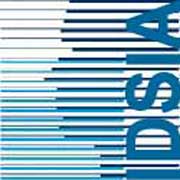 |
 |
 |
 |
 |
 |
 |
 |
| . |
|
April 10 update: the position is filled - thanks a lot to all
the excellent applicants! We are anticipating another
related position
(not yet official though).
Please send an update in case you are interested in that one, too.
-Jürgen Schmidhuber
|
|
. |
 |
Postdoc Position at IDSIA
(2 years; prolongation possible; announced Nov 2005)
|
.
|
|
Scroll down for more info on IDSIA and Switzerland!
|
|
|
We are seeking
an outstanding
postdoc with experience / interest in topics such as
sequence learning algorithms,
adaptive robotics,
recurrent neural networks (RNN),
sequential active vision,
hidden Markov models, dynamic Bayes nets and other Bayesian approaches,
universal learning machines,
Kolmogorov complexity /
algorithmic information theory,
artificial evolution,
in particular
RNN evolution,
support vector machines
(especially recurrent ones),
reinforcement learning,
curiosity- driven learning.
Goal: to advance the state of the art in sequence learning in general,
and to build vision-based robots and other agents that learn to solve
challenging tasks.
No teaching required - just research.
The official language at IDSIA is English.
Possible start: Around June 2006, for 2 years; prolongation possible.
Salary commensurate with experience:
roughly SFR 72,000 per year, or US$ 55,655 as of Dec 19 2005.
Low taxes. There is travel funding in case of papers accepted at important
conferences.
|
|
|
Applicants should submit as soon as possible:
(i) Curriculum vitae, (ii) List
of three references and their email addresses, (iii)
Brief statement on how their research interests fit the topics
above.
Submit your application in plain ASCII format (plain text files!)
by email to juergen@idsia.ch.
Small PDF attachments are ok (but no .doc files, please).
Do NOT send large files; instead send URLs.
In the subject header, please
mention your name and the keyword postdoc2006.
For example, if your name is John Smith, use
subject: John Smith postdoc2006.
|
|
. |
 |
|
IDSIA's research focuses on
combinatorial optimization and artificial ants,
artificial recurrent neural networks,
learning robots,
universal
predictors and reinforcement learners,
optimal universal search algorithms
(e.g.,
Gödel machine
&
OOPS),
complexity and generalization issues,
unsupervised learning and information theory,
forecasting,
evolutionary computation.
IDSIA is small but visible, competitive, and influential.
Its algorithms hold the world records for
several important operations research benchmarks (e.g.,
see NATURE 406(6791):39-42 for
an overview of IDSIA's artificial ant algorithms).
Some of IDSIA's results were reviewed not only in
science journals such as Nature, Science, Scientific American,
but also in the popular press, including TIME magazine, the New York Times,
der SPIEGEL, and many others.
IDSIA has strong ties to the
TU Munich lab of cognitive robotics
at TUM Computer Science.
|
|
|
. |
 |
|
Switzerland is a good place for scientists.
It is the origin of special relativity (1905) and the
World Wide Web (1990), is associated with 105 Nobel laureates,
boasts by far the most Nobel prizes per capita (350% more than the US),
the world's highest number of publications per capita,
the highest number of patents per capita,
the highest citation impact factor, etc.
|
|
|
. |
 |
|
IDSIA is located near the beautiful city of Lugano in Ticino
(pictures),
the scenic southernmost province of Switzerland.
Milano, Italy's center of fashion and finance, is 1 hour away, Venice 3 hours.
|
|
|
. |











